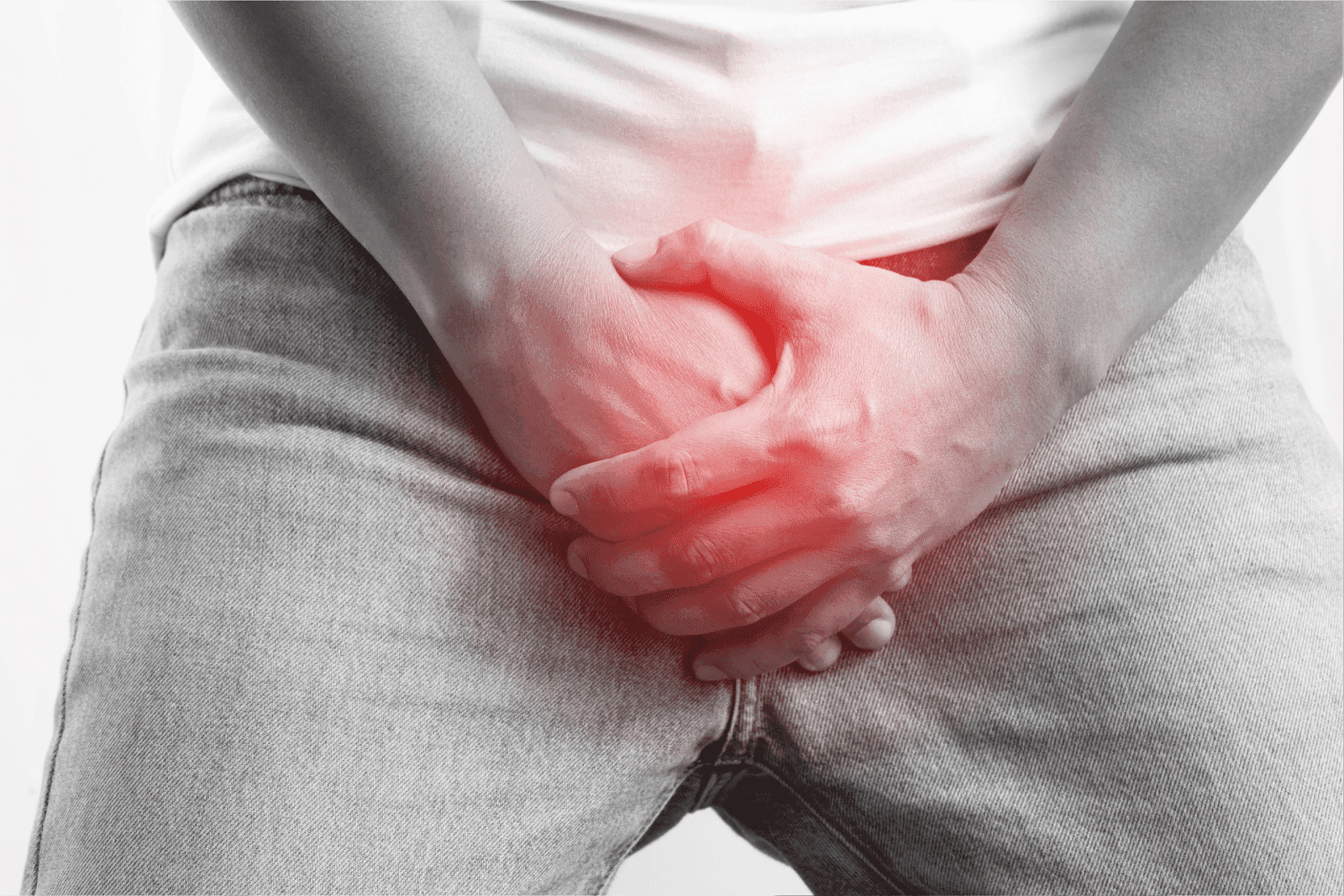Why Is My Nose Twitching?
Nose twitching is a curious and sometimes unsettling sensation that many people experience at some point. Whether it’s a brief spasm or a persistent twitch, the involuntary [...]
Read More
Medically reviewed by Abhijit Bhattacharyya | MD, PhD, MBA, Tufts University School of Medicine - Miami, Florida on August 19th, 2025.
A bruise in the groin area can be alarming: the skin may darken, pain can be sharp or throbbing, and everyday movement suddenly feels risky. Many bruises are harmless and resolve on their own, but some require prompt medical attention. This guide explains common causes, how to tell whether a groin bruise is serious, what tests and treatments may be needed, and when to seek professional help, including telehealth options like Doctronic.ai for quick evaluation.
The groin is a complex area where skin, muscle, vessels, nerves, and lymphatic tissue meet. Because of that mix, impacts or strains can produce symptoms that overlap between simple bruising and deeper injury. Even a seemingly small bump during sports, a fall, or an awkward twist can damage underlying structures.
Blood vessels in the groin are relatively superficial in places, and the area is richly supplied with sensory nerves. That combination means bruises can look dramatic and feel disproportionately painful compared with similar trauma on other parts of the body. Age, medications (especially blood thinners), and underlying medical conditions also influence how easily bruises form and how quickly they heal.
 Common Causes of Groin Bruising
Common Causes of Groin BruisingNot all bruises come from the same mechanism. Understanding likely causes helps distinguish a minor injury from something that needs urgent care.
Direct blows from contact sports, falls, or collisions are the most common cause. The force ruptures small blood vessels under the skin, leading to the classic black-and-blue discoloration. Pain and swelling are usually proportional to the force, and symptoms typically improve over days to weeks.
Painful groin bruises after sudden acceleration or change of direction may signal a strained or partially torn adductor (groin) muscle. A muscle injury can cause deep-seated pain, localized swelling, and sometimes visible bruising as blood tracks down between tissue layers.
A hematoma is a larger collection of blood within tissues. Significant trauma or bleeding disorders can produce a palpable lump, deeper bruising, and prolonged discoloration. Hematomas may take longer to resolve and occasionally need drainage if large or painful.
An inguinal hernia occurs when tissue pushes through a weak spot in the abdominal wall into the groin. If the hernia causes tissue strain or vessel injury, discoloration and bruising can appear. Hernias that become incarcerated or strangulated are surgical emergencies.
Medical conditions, such as platelet disorders, liver disease, or use of anticoagulant medications (warfarin, direct oral anticoagulants), can lead to easy or unexplained bruising. If bruising appears without a clear injury, or if it spreads rapidly, medical evaluation is necessary.
Most bruises are benign, but certain signs signal the need for urgent evaluation. Seek immediate care if any of the following are present.
Expanding bruising or rapid swelling suggests ongoing bleeding or a growing hematoma. These findings may indicate a vascular injury or a bleeding disorder and warrant prompt assessment.
Intense, escalating pain that does not improve with rest and over-the-counter pain measures can point to a significant muscle tear, nerve entrapment, or compartment-like pressure within tissue planes.
Difficulty bearing weight, walking, or moving the hip and thigh is a red flag. A deep muscle tear, hip joint injury, or nerve injury may be responsible and may need imaging or specialty care.
Symptoms of nerve compression or vascular compromise require urgent attention. Numbness, progressive tingling, and especially decreased skin temperature or pallor are concerning for impaired circulation.
Warmth, redness that spreads, fever, or pus are signs of infection. Although infection is less common with simple bruises, puncture wounds, or hematomas, they can become infected and need antibiotics or drainage.
Bruises that appear without an injury, multiple spontaneous bruises, uncontrolled bleeding, or bruising while on blood thinners should prompt a medical workup for an underlying bleeding disorder.
Clinical examination is the starting point. Healthcare providers assess the history (mechanism of injury, medications, prior bleeding) and perform a focused physical exam looking for swelling, deformity, tender points, and signs of vascular or nerve compromise.
Not every bruise requires imaging, but certain findings will trigger it. X-rays are useful if a fracture is suspected. Ultrasound is helpful for detecting hematomas, muscle tears, or vascular injuries, and can guide drainage if necessary. MRI provides a detailed view of soft tissue structures and is preferred for suspected deep muscle tears, avulsion injuries, or when conservative care fails to improve symptoms.
Blood tests may include a complete blood count (CBC) to look for anemia, coagulation studies (PT/INR, aPTT) if a bleeding disorder or anticoagulant effect is suspected, and tests for liver function in relevant clinical contexts. These tests help identify medical causes for easy bruising.
Treatment depends on the cause, severity, and associated findings. Many bruises respond to conservative care, but larger injuries or complications need targeted approaches.
For minor bruises: rest the area, apply ice for 10–20 minutes every 1–2 hours for the first 48 hours, compress with a gentle wrap if tolerated, and elevate when possible to reduce swelling. Over-the-counter pain relievers such as acetaminophen or, if appropriate, NSAIDs like ibuprofen can help; however, people on anticoagulants or with certain medical conditions should avoid NSAIDs unless cleared by a clinician.
Once acute pain and swelling decline, guided stretching and strengthening help restore function and prevent stiffness. A progressive return to activity reduces the risk of re-injury, particularly after muscle strains.
Large hematomas that cause persistent pain or restrict motion may need ultrasound-guided aspiration or surgical drainage. Significant muscle tears or hernias may require surgical repair, especially if they cause ongoing dysfunction or risk complications.
If bruising stems from a bleeding disorder, medication interaction, or liver disease, targeted medical management is necessary. This may involve adjusting anticoagulant dosing under supervision, treating liver disease, or consulting a hematologist for bleeding disorders.
Simple preventive measures can lower the chance of re-injury and make bruises less likely or severe.
During contact sports or activities with a high risk of falls, wear appropriate protective equipment and use proper movement mechanics. Strengthening core and hip muscles supports stability and reduces strain on the groin.
Review medications with a clinician, especially blood thinners and certain supplements like high-dose fish oil or vitamin E that can increase bleeding risk. Manage chronic conditions like liver disease and keep blood pressure in control to reduce the risk of spontaneous bleeding.
When returning from an injury, follow a staged program that emphasizes flexibility, strength, and a controlled increase in load. Sudden return to high-intensity activity is a common cause of re-injury.
Knowing when to seek professional care can prevent complications. See a clinician immediately if the bruise is rapidly expanding, extremely painful, causes loss of function, involves signs of infection, or appears without any clear cause.
For many patients, an initial assessment can be done quickly via telehealth. Services that combine AI triage with clinician video visits can deliver fast, evidence-based guidance about whether immediate in-person evaluation, imaging, or emergency care is needed.
Doctronic.ai provides free AI doctor visits through its website, offering instant, research-driven answers to health questions and recommendations on next steps. For those who need direct clinician care, Doctronic also offers inexpensive telehealth video visits (under $40) with licensed doctors available 24/7 in all 50 states, making it easy to get professional advice about a groin injury at any hour. Visit Doctronic.ai to start an evaluation and get a clear plan for treatment or urgent referral if necessary.
If directed to an in-person evaluation, clinicians usually re-check the history, examine the groin and hip, and may order imaging. X-ray rules out fractures, ultrasound evaluates hematomas and muscle injuries, and MRI is used for complex soft-tissue concerns.
Emergency department clinicians will prioritize ruling out life- or limb-threatening problems, such as significant bleeding, vascular injury, and infection. If surgery is needed, a timely referral to an appropriate specialist, such as an orthopedic surgeon, general surgeon for hernias, or vascular surgeon, will be arranged.
Most minor groin bruises improve over one to three weeks, with full recovery in 4–6 weeks for moderate injuries. Muscle strains can take 4–12 weeks depending on severity, and major tears or surgical repairs may require months of rehabilitation. Hematomas gradually resorb; large ones that are drained may resolve faster once pressure is relieved.
Track improvement: diminishing pain, reduced swelling, and increasing range of motion are good signs. Persistent or worsening symptoms beyond expected recovery timelines should prompt re-evaluation.
Apply cold packs in the first 48 hours, switch to warm compresses after 48–72 hours to promote circulation, and limit activities that aggravate pain. Wear supportive garments during activity if helpful, and avoid anticoagulant medications or NSAIDs without consulting a clinician when there is concern for significant bleeding.
Document the injury: note when it happened, how it occurred, medication use, and any changes in symptoms. This information helps clinicians make faster, safer decisions during telehealth or in-person visits.
Telehealth can be an excellent first step. High-quality telemedicine platforms combine symptom triage, visual assessment (patient-guided examination on video), and prompt recommendations for imaging or urgent care when needed. An AI-assisted platform can provide quick, literature-based answers before a clinician confirms the plan.
Doctronic.ai offers both free AI-powered visits to help determine urgency and affordable video visits with licensed physicians for direct care. This blended approach allows rapid access to modern, peer-reviewed medical guidance and a seamless pathway to in-person care if necessary. For many, starting at Doctronic.ai avoids unnecessary delays and provides clear next steps when a groin bruise appears worrisome.
 Key Takeaways
Key TakeawaysGroin bruises are common and often benign, but certain signs, such as rapid swelling, severe pain, loss of function, numbness, or unexplained bleeding, require prompt medical attention. A careful history and focused exam usually identify whether imaging or specialty care is needed. Conservative care helps most bruises heal, while large hematomas, significant muscle tears, hernias, or medical causes of easy bruising may need intervention.
Fast access to assessment and advice is important. Using telehealth wisely can speed diagnosis and ensure safe management: start with an AI-guided evaluation, and escalate to an affordable clinician video visit when necessary. For a quick, evidence-based evaluation and affordable follow-up, visit Doctronic.ai to check symptoms and connect with care.
When in doubt, seek evaluation, especially if symptoms are severe or worsening. Prompt attention prevents complications and helps return to full activity sooner and safer.
If you’re unsure whether your bruise needs urgent care, skip the wait and get a fast, evidence-based evaluation from Doctronic, the #1 AI Doctor. Our AI visits are free and synthesize the latest peer-reviewed medical guidance, and if you need a clinician, you can book an inexpensive telehealth video visit (under $40) with our doctors 24/7 across all 50 states. Over 10 million people have trusted Doctronic for smarter, faster, and more personal care. Skip the line. Talk to an AI Doctor Now, for free.
Nose twitching is a curious and sometimes unsettling sensation that many people experience at some point. Whether it’s a brief spasm or a persistent twitch, the involuntary [...]
Read MoreAn itchy sensation on the roof of the mouth can be uncomfortable and puzzling. This symptom can arise for various reasons, ranging from mild irritations to underlying health [...]
Read MoreUnderstanding your ovulation cycle can be a game-changer when trying to conceive or simply wanting to understand your body better. One of the most reliable tools to track [...]
Read More